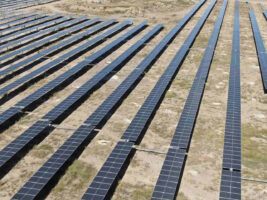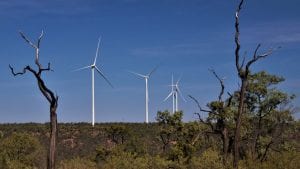The Chinese government has lifted its solar PV installation target for the fourth time in the last 15 months, and now expects 35GW of solar PV to be installed in the country by 2015. This is up from an original target of just 5GW, which was then raised to 10GW, 15GW and 21GW. According to Shi Dinghuan, the president of the Chinese Renewable Energy Society and a counselor on the State Council, as much as 10GW will be installed in 2013 alone, adding to the 6.5GW that has already been installed.
Shi told Bloomberg in a telephone interview that installing solar PV would help reduce reliance on fossil fuels blamed for greenhouse gases and the record smog levels recorded in Beijing this month. “We’ve got more pressure to save energy and reduce emissions as smog worsens due to pollution,” he said. China allocated 13 billion yuan ($2 billion) in subsidies for domestic solar project developers in 2012, the official Xinhua News Agency reported last month. Bloomberg said interest in renewable energy is getting a boost as Beijing warned the city’s 20 million people to prepare for at least another day of smog, and officials closed some factories and ordered government cars off the road as pollution remained at hazardous levels.
Solar thermal with storage
The first large scale solar thermal plant with full energy storage in California has been given the go ahead, after Californian utility PG&E agreed to a power purchase agreement and the local utilities commission gave its rubber stamp. The 150MW Rice Solar Energy Project, to be constructed by Solar Reserve, will feature solar tower technology with up to ten hours of storage capabilities through the use of molten salts when it is built in California’s Sonoran Desert by 2016. PG&E and other Californian utilities are required to source 25 per cent of the energy from renewables by 2015, and 33 per cent by 2020.
The utility commission said the solar energy storage technology would enhance grid stability and facilitate the integration of other renewable energy resources such as wind, solar PV and direct steam solar thermal. “Eight to ten hours of fully dispatchable storage is quite impressive and offers significant benefits to the system that we don’t yet know how to quantify fully, but there’s definitely value there,” said one commissioner.
Solar Reserve is also building a 110MW Crescent Dunes solar thermal project with storage in Nevada. That is due to be completed later this year. CEO Kevin Smith said the technology was a “true alternative” to conventional generators, and could provide firm and reliable electricity as needed by the utility or system operator, day and night. The projects utilise a dry-cooled system in order to minimise its water consumption in the desert location to less than 20% of the amount consumed by conventional coal or nuclear facilities.
Yingli predicts return of margins
Yingli, newly crowned as the largest silicon-based solar panel manufacturer in the world, said it expects its margins to increase by as much as 20 per cent this year if module prices rebound and production costs drop. In an interview with Bloomberg, Yingli CFO said production costs were expected to decline “significantly” as new materials and technology are used, economy of scale intensifies and conversion efficiency rises. And he expected the sale price of modules would stabilize and then rise as the market returned to a “more rational level.” Yingli predicts it will increase its shipments by at least 50 per cent this year compared with 2012, and says the global market will grow by at 15 per cent to more than 35GW. China will account for one third of its market.
Solar funding goes mainstream
Developers of solar projects continue to find innovative ways of finding finance. The Bonnaroo Music and Arts Festival in Manchester, Tennessee, funded a 50kW solar project by an “opt-in” one dollar contribution that festival goers could choose to make when purchasing tickets. The festival organisers expect it will account for 20 per cent of the annual electricity use of the site, feed electricity back into the grid at other times, and pay for itself within 5 years.
Elsewhere, though, financing of solar PV continues to go mainstream. US module manufacturer SunPower Corp said it has US Bancorp will provide $100 million to provide finance, including leasing, for homeowners looking to install rooftop solar, continuing a growing trend of US financial institutions providing money for such deals.
The program will be available across 9 US states. “With residential solar systems, more families can take control of their electricity bills and deliver the environmental and health benefits of solar power to their community,” said Darren Van’t Hof, director of renewable energy investments for US Bancorp. Australian banks, however, are yet to come to the party for such deals.








